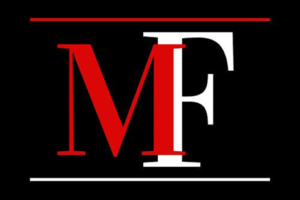As a business student, aspiring marketer, or even an employee, you must have heard terms like product differentiation, product bundling, product backlog, and so on; then there are product strategies.
Have you thought about what is a product? Yes, what exactly is a product? Strange, but we often fail to define this basic concept. This is a detailed discussion on what is a product in marketing with examples.
What is a Product in Marketing?
As we are defining “product” from a marketing aspect, let’s have a look at how famous marketers define it.
Philip Kotler: “A product is anything that can be offered to a market for attention, acquisition, use or consumption. It includes physical objects, services, personalities, place, organizations and ideas.”
Alderson: “A product is a bundle of utilities consisting of various features and accompanying services.”
Simply put, a product refers to anything that is developed through a process and delivers value or benefits to a specific market. This could be a physical item, a digital solution, a service, or even an idea. The key aspect is that it satisfies a need or solves a problem for users or customers.
For example, a wooden chair is a product because it is built through manufacturing and provides seating. Software like Microsoft Office is also a product, offering tools for productivity.
Services such as agile coaching or consulting are considered products too, as they provide expertise and guidance. Even intangible concepts, like a patentable algorithm or dating strategies, can be seen as products if they offer benefits.
Types of Products in Marketing
A product can fall into one of several categories:
- Physical goods: Items like furniture, smartphones, or clothing.
- Digital products: Software, eBooks, mobile apps, or online courses.
- Services: Activities performed for others, such as consulting, maintenance, or education.
- Ideas or intellectual property: Innovations, methodologies, or patents.
What matters most is not the form, but whether the offering provides value to someone.
How Products are Created?
Every product comes into existence through some kind of activity or process. It might involve design, assembly, development, or testing. For example:
- A chair is created from raw materials like wood, which are processed and assembled.
- Software like Microsoft Office goes through planning, coding, and quality testing.
- A consulting service is structured around knowledge sharing and strategy execution.
- Even if the process isn’t formal or fully documented, it still plays a role in producing the final product.
What Is a Product in Marketing? Think in Layers
Products can exist within other products, forming layers or subproducts. This is known as a recursive product definition.
Take a pen, for instance. The pen is the main product, but its ink cartridge is a subproduct. Similarly, a chair may contain pre-made legs purchased from another supplier. These chair legs are also products in their own right.
Each layer must still deliver value. A company buying chair legs sees them as a product that helps them complete a larger offering.
Products Must Offer Market Value
A crucial part of defining what is a product in marketing is ensuring that the product delivers benefits to a target market. Something doesn’t need to be bought directly by customers to qualify. As long as it meets a need, it is valid as a product.
Replacement parts like pen refills or pre-cut chair legs provide value to manufacturers or end-users. Their role in the value chain confirms their status as products.
What is a Product Example? Real-World Application: The Airline Industry
Consider an airline company. Its main product is transportation, moving passengers from one location to another. This directly benefits paying customers and is clearly a product.
However, internal systems like aircraft maintenance scheduling or flight booking platforms also qualify as products. They are developed through a process and serve a market. For example:
- Maintenance software helps employees keep planes safe and operational.
- The airline’s website allows passengers to book flights easily, fulfilling a customer need.
Each of these offerings, even when not sold directly, provides value and serves a specific audience. Therefore, they are products.
